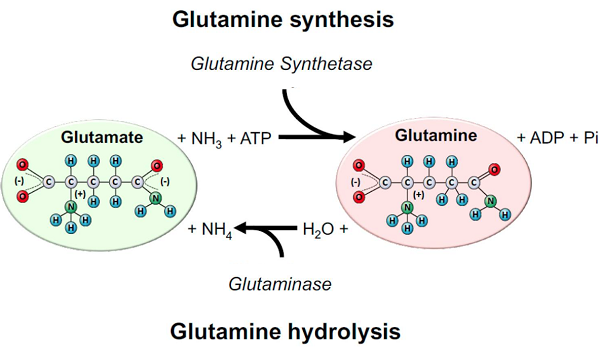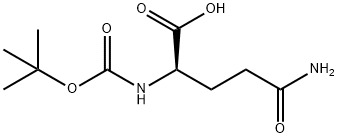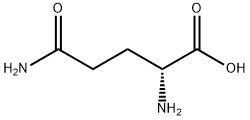Chemical Properties
White solid
Uses
N2-Boc-D-glutamine is an N-Boc-protected form of D-Glutamine. D-Glutamine is an unnatural isomer of L-Glutamine that is present in human plasma an is a source of liberated ammonia. D-Glutamine can be synthesized by enzymatic means or can be found in cheeses, wine and vinegars as well.
Biosynthesis
Glutamine is mainly synthesized by the enzyme glutamine synthetase (GS) and hydrolyzed by the enzyme glutaminase (GLS). GS catalyzes glutamine biosynthesis using glutamate and ammonia (NH3) as a source. In this reaction, one ATP is consumed. Glutamate can be donated by many amino acids obtained exogenously (i.e., diet) and/or from endogenous amino acids’ catabolism. On the other hand, GLS is responsible for glutamine hydrolysis to glutamate and ammonium ion (NH4). Almost all cells in the body express GS and GLS, and their predominant expression and activity will dictate if the tissue is more likely to produce or consume glutamine in health and disease[1].

reaction suitability
reaction type: Boc solid-phase peptide synthesis
References
[1] Vinicius Cruzat. “Glutamine: Metabolism and Immune Function, Supplementation and Clinical Translation.” Nutrients 10 11 (2018).







